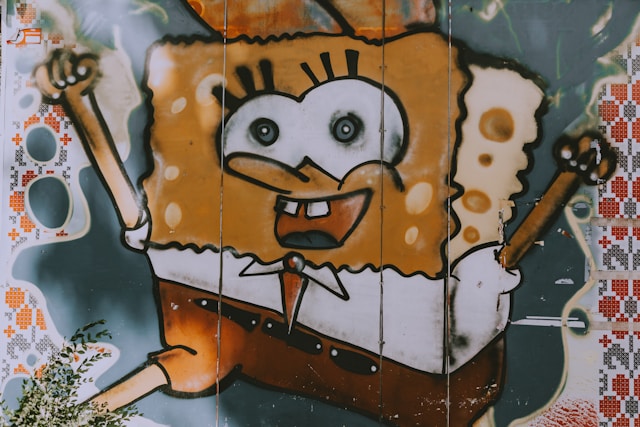What is Mamgatoto?
Have you ever come across the term Mamgatoto and wondered what it means? It’s more than just a word—it’s a whole cultural phenomenon. While it may sound exotic to many, Mamgatoto represents a rich tapestry of heritage, tradition, and identity. Whether it refers to a place, a tradition, or a cultural movement depends on the context, but its heart is deeply rooted in community.
Origins and Cultural Roots
The origins of Mamgatoto are often traced back to indigenous communities, where it developed as a way of life. It’s believed to have been a system that blended nature, spirituality, and community. Over the centuries, Mamgatoto evolved, integrating with regional customs and values, creating something truly unique.
Understanding the Significance
Why Mamgatoto Matters
Social Relevance
Mamgatoto isn’t just a cultural relic—it’s a living, breathing part of society. It shapes identity, fosters community bonds, and strengthens familial connections. In villages and towns where Mamgatoto thrives, people often share a sense of belonging and purpose.
Economic Influence
Mamgatoto also plays a major role in the local economy. It fuels tourism, supports traditional crafts, and provides livelihoods for artisans. It’s proof that culture isn’t just about the past—it can be a powerful force for the future.
Global Recognition and Appeal
From academic circles to travel bloggers, Mamgatoto has caught the eye of the world. Its uniqueness is magnetic—something that attracts anthropologists, tourists, and cultural preservationists alike.
Historical Context
The Evolution of Mamgatoto Over Time
What started as a localized tradition slowly expanded across regions. As societies developed and interacted, Mamgatoto absorbed new influences while keeping its core intact. It’s a beautiful example of how traditions can evolve without losing their soul.
Important Historical Milestones
Key historical moments—colonialism, independence movements, urbanization—all impacted Mamgatoto. Each era brought its own challenges and transformations, but Mamgatoto adapted, reflecting resilience and flexibility.
Cultural Impact
Mamgatoto in Local Traditions
Festivals and Celebrations
Mamgatoto comes alive in its festivals. Think music, dance, colorful garments, traditional dishes, and ancestral chants. It’s a full-sensory experience that both locals and visitors cherish.
Folklore and Storytelling
Elders pass down stories steeped in Mamgatoto values. These tales teach moral lessons, entertain, and preserve the community’s shared history.
Mamgatoto and Identity
Ask anyone from a Mamgatoto-rich community about their roots, and their pride will be undeniable. It’s not just about where they come from—it’s about who they are.
Mamgatoto in the Modern World
Digital Influence and Social Media
Instagram posts, TikTok dances, YouTube documentaries—Mamgatoto is no longer confined to its geographical roots. The digital world has given it a global stage.
Representation in Pop Culture
Movies, novels, fashion lines—all inspired by Mamgatoto. Its aesthetics and values have found a new home in contemporary culture.
Economic Aspects of Mamgatoto
Local Businesses and Tourism
From craft markets to cultural tours, Mamgatoto draws tourists seeking authentic experiences. Local entrepreneurs build businesses around these traditions.
Artisans and Handicrafts
Handmade items like woven baskets, beadwork, and pottery tell the story of Mamgatoto. Each item is more than a souvenir—it’s a symbol of heritage.
Job Creation and Community Development
Mamgatoto-based enterprises create jobs and empower communities, especially women and young people. Culture becomes not just an asset, but an opportunity.
The Artistic Side of Mamgatoto
Visual Arts
Think intricate patterns, bold colors, and storytelling through brushstrokes. Mamgatoto’s visual expressions reflect both history and creativity.
Music, Dance, and Theater
From drumbeats to dramatic plays, the performing arts are central. They don’t just entertain—they educate, inspire, and connect generations.
Language and Literature
Stories and Proverbs
Short, powerful, and packed with wisdom—Mamgatoto proverbs are mini life-lessons passed down through time.
Oral vs Written Traditions
Much of Mamgatoto’s history has been passed down orally. But today, more is being documented in books, blogs, and research papers to preserve it for the future.
Challenges Facing Mamgatoto
Modernization and Cultural Erosion
As the world gets faster and more digital, traditional practices risk being forgotten. Younger generations often struggle to relate to the customs of their elders.
Climate and Environmental Threats
Natural elements of Mamgatoto—land, rivers, forests—are under threat. Environmental damage affects not just nature but the culture that depends on it.
Preserving Mamgatoto
Community Efforts
Grassroots organizations are leading the charge to keep Mamgatoto alive. Through events, education, and mentorship, they’re creating bridges between generations.
Educational Programs
Schools are integrating Mamgatoto history and values into their curricula. Learning about it isn’t just for scholars—it’s for everyone.
Government and NGO Support
Policies, funding, and cultural grants are essential. When institutions back cultural heritage, communities thrive.
How to Experience Mamgatoto
Festivals to Attend
Look for cultural festivals where Mamgatoto takes center stage. These are often seasonal and celebrated with full community involvement.
Foods to Try
Traditional dishes tied to Mamgatoto are flavorful, organic, and often ceremonial. Think hearty stews, spiced grains, and natural ingredients.
Places to Visit
Visit villages, cultural centers, and museums that celebrate Mamgatoto. It’s not just sightseeing—it’s soul-sighting.
Mamgatoto for the Next Generation
Teaching the Youth
Workshops, storytelling circles, and art classes engage young minds and make tradition exciting again.
Passing Down Traditions
It’s about more than memory—it’s about mentorship. Elders play a critical role in keeping Mamgatoto alive for the future.
Myths and Misconceptions
Common Misunderstandings
Some think Mamgatoto is outdated or irrelevant. Others misinterpret it as primitive. But in truth, it’s vibrant, modern, and evolving.
Clearing the Air
Mamgatoto isn’t stuck in the past—it’s a living force adapting to the future. Understanding it requires open minds and open hearts.
How You Can Support Mamgatoto
Ethical Tourism
Travel with respect. Choose local guides, shop local, and participate mindfully. Your curiosity should empower, not exploit.
Donating to Cultural Initiatives
Support NGOs and community projects that focus on preserving Mamgatoto. Your dollars can make a real difference.
Conclusion
Mamgatoto is more than just a tradition—it’s a legacy. It’s about honoring the past, celebrating the present, and building a meaningful future. Whether you’re a cultural explorer, a curious traveler, or someone seeking roots, Mamgatoto offers something priceless: connection. Let’s not just admire it from a distance—let’s engage with it, learn from it, and help it thrive.
FAQs
1. Is Mamgatoto a specific place or a cultural concept?
It can refer to both—a location rich in culture and the traditions that originate from there.
2. How can I learn more about Mamgatoto?
Attend festivals, read local literature, watch documentaries, or connect with communities that practice it.
3. Is Mamgatoto still practiced today?
Absolutely! It’s a living tradition, still celebrated and evolving across generations.
4. Can tourists experience Mamgatoto firsthand?
Yes, many communities welcome cultural tourism. Just be respectful and open-minded.
5. Why is preserving Mamgatoto important?
Because it carries the wisdom, identity, and stories of people. Losing it would mean losing a part of humanity’s heritage.


